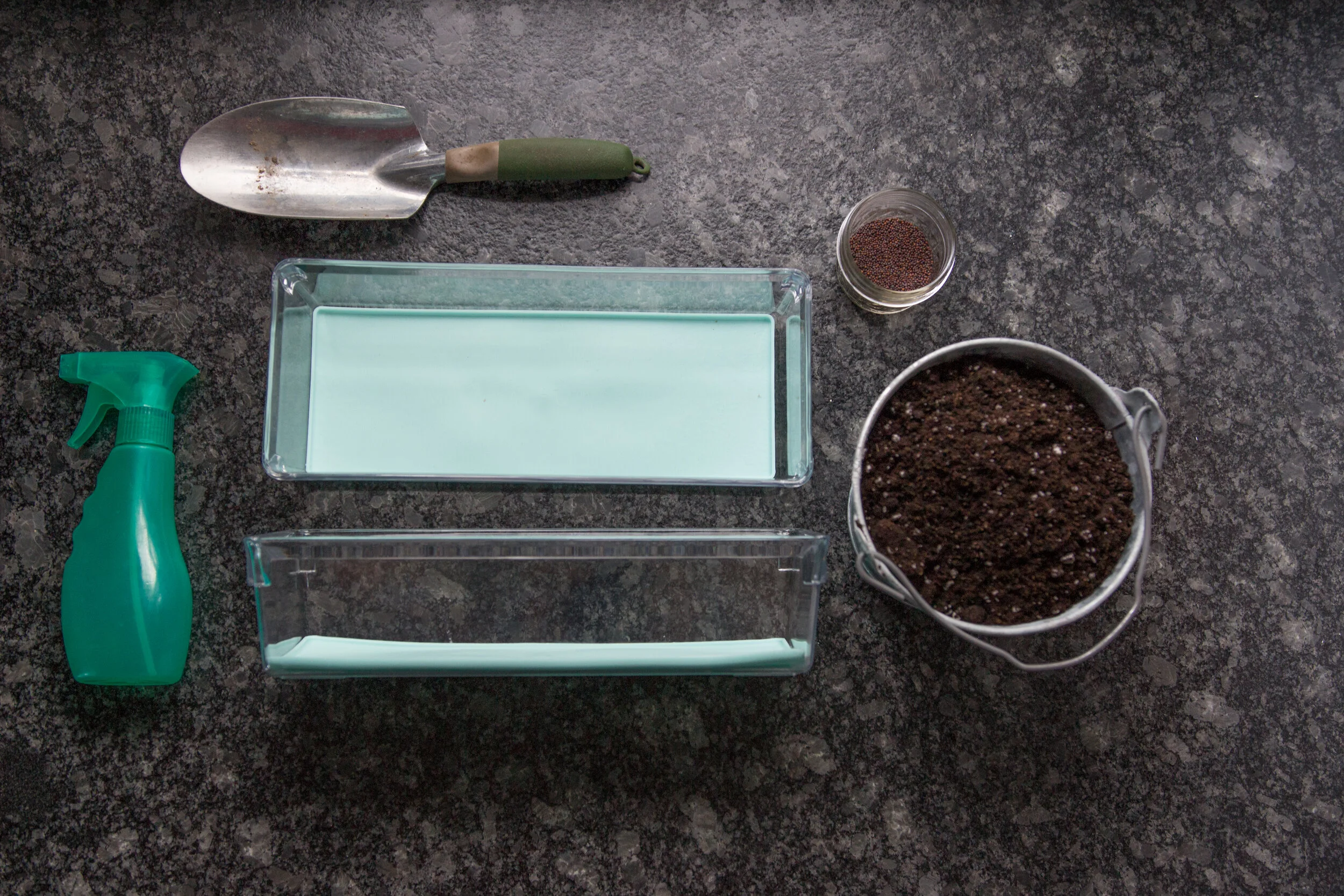Garden to Table in Two Weeks
How To Grow Microgreens at Home
Microgreens are the new hotness in food trends. You’ve probably noticed them popping up on sandwiches and salads all over the place.
Besides being tiny and cute these mini plants pack a powerful nutritional punch and are more nutrient dense than their mature vegetable counterparts.
What exactly are microgreens?
Microgreens are the seedlings of common vegetables like kale, lettuce, beets, broccoli, and more. The seeds are densely planted and harvested once the plants first true leaves emerge.
These plant babies have a delicate flavor and can be used in a variety of dishes like omelettes, salads, and as garnishes on pizza or pasta.
Microgreens are simple and fun to grow at home. Here’s how.
Step one: Gather Your Supplies
Shallow, wide container or seedling tray with drainage holes
Seeds- you can buy mixed microgreen seed packets or use seeds from any vegetable you’d like.
Spray bottle
Sunny windowsill or grow light- microgreens need about 4 hours of direct sunlight a day to thrive
Step two: Plant
Fill your container with potting mix
Sprinkle seeds evenly and densely over the potting mix
Lightly press the seeds into the soil
Add a thin layer of potting mix on top of the seeds
Using the spray bottle or a mister, moisten the soil
Place in a sunny windowsill or under a grow light
Step three: Watch, Water, and Wait
The seeds should sprout within 3-7 days
Keep the soil moist by spraying it once or twice daily
Once sprouted, continue to spray the seedlings keeping the soil moist, but not soaking wet
Step four: Harvest!
Plants are usually ready to harvest after about 15 days and once the plants have established their first true leaves. The true leaves are the leaves that emerge after the seedling leaves. They resemble the leaves of a mature plant. Use scissors to cut the stems right at the soil level. Rinse and enjoy!
Seeds can be sown continuously all year round for fresh greens every two weeks.
Note: some links contained in this post are affiliate links. If you make a purchase with these links I will receive a small commission


